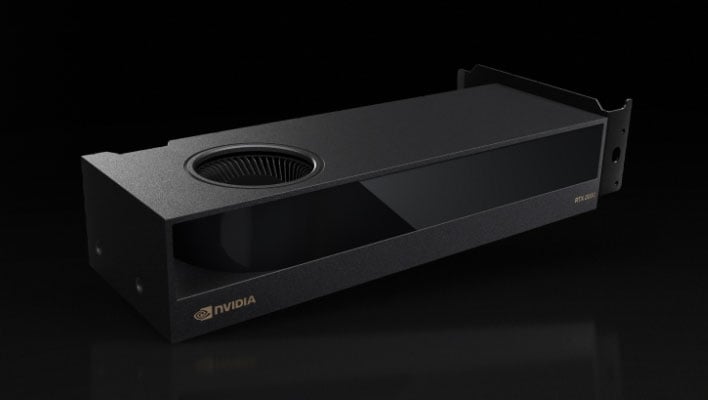NVIDIA Unveils $625 RTX 2000 Ada Generation GPU With A VRAM Boost

Hot on the heels of NVIDIA's Geforce RTX 40 Super series refresh, team green has launched yet another graphics card, though this one takes aim at professionals. It's the RTX 2000 Ada Generation and while it is not intended for gaming, it could certainly be employed in workstations that are used by game designers, among many other tasks.
The RTX 2000 Ada Generation joins a fleshed-out lineup of workstation accelerators that are based on NVIDIA's Ada Lovelace GPU architecture. It takes its place at the bottom of the heap, sitting underneath the RTX 4000 SFF Ada, RTX 4000 Ada, RTX 4500 Ada, RTX 5000 Ada, RTX 5880 Ada, and RTX 6000 Ada. By extension, that also means it is the most affordable of the bunch—it carries a $625 MSRP, which is half as much as the next GPU up on the totem pole.
While the newest entry doesn't carry an "SFF" designation like the RTX 4000 SFF, it's a small form factor card with the same dimensions, measuring 2.7 inches (H) by 6.6 inches (L) and occupying two expansion slots. It also comes armed with a sleek, blower-style cooler and a rather tame 70W of total board power.
"Modern multi-application workflows, such as AI-powered tools, multi-display setups and high-resolution content, put significant demands on GPU memory. With 16GB of memory in the RTX 2000 Ada, professionals can tap the latest technologies and tools to work faster and better with their data," NVIDIA says.
That 16GB of GDDR6 memory with ECC is a bump from 12GB on the previous-generation RTX 2000 that's based on Ampere. It's tied to a 128-bit bus for 224GB/s of memory bandwidth, compared to 192-bit and 288GB/s on the Ampere variant. In other words, NVIDIA traded a bit of bandwidth for more memory.
Other key specs include 2,816 CUDA cores, 88 fourth-generation Tensor cores, 22 third-generation RT cores, 12 TFLOPS of single-precision performance, 22.7 TFLOPS of RT core performance, and 191.9 TFLOPS of Tensor performance. Those are all significantly improved from the previous-gen part, which touted 8 TFLOPS of single-precision performance, 15.6 TFLOPS of RT performance, and 63.9 TFLOPS of Tensor performance.
Interestingly, the RTX 2000 Ada Generation features a PCI Express 4.0 x8 interface rather than x16 like the card it's replacing. It's not clear why exactly NVIDIA went that route, though assuming the rated performance figures hold true, it shouldn't really matter.

Source: NVIDIA
It's also interesting to note that the RTX 2000 Ada Generation sports fewer CUDA, Tensor, and RT cores, all of which are offset by the performance uptick that NVIDIA's Ada Lovelace architecture provides over Ampere. To that end, NVIDIA claims its newest part offers 1.6x better AI performance compared to the previous part, along with 1.5x better rendering performance, a 1.4x bump in VR workloads, and 1.3x better performance in CAD applications, 3D modeling, and video editing.
All that said, the price arguably the most attractive feature, as it expands the reach of NVIDIA's latest-generation GPU architecture in professional form to a wider range of customers. Those interested in the RTX 2000 Ada Generation can pick it up now through NVIDIA's global distribution partners. Dell, HP, and Lenovo will offer the part in its workstations in April.

